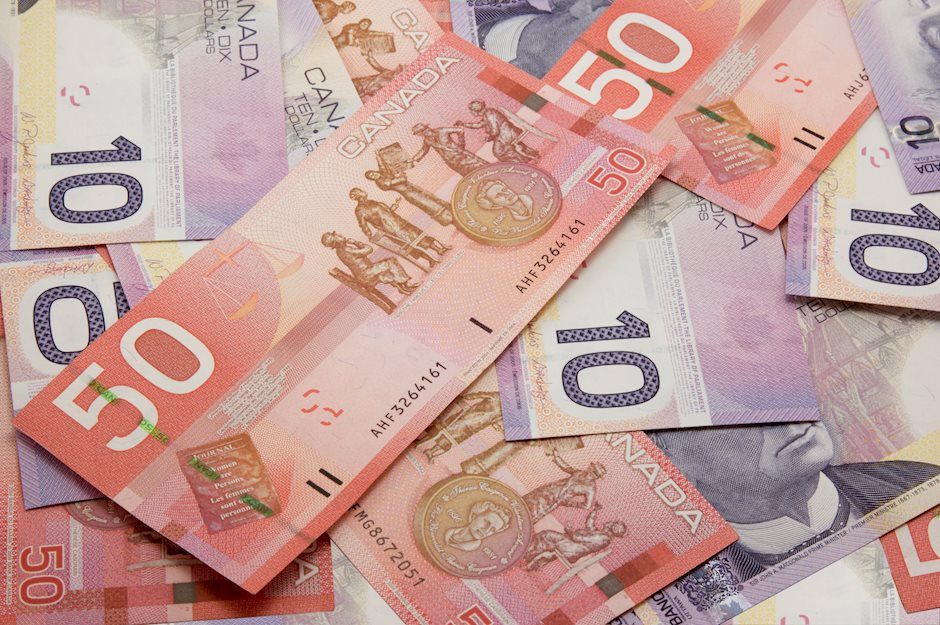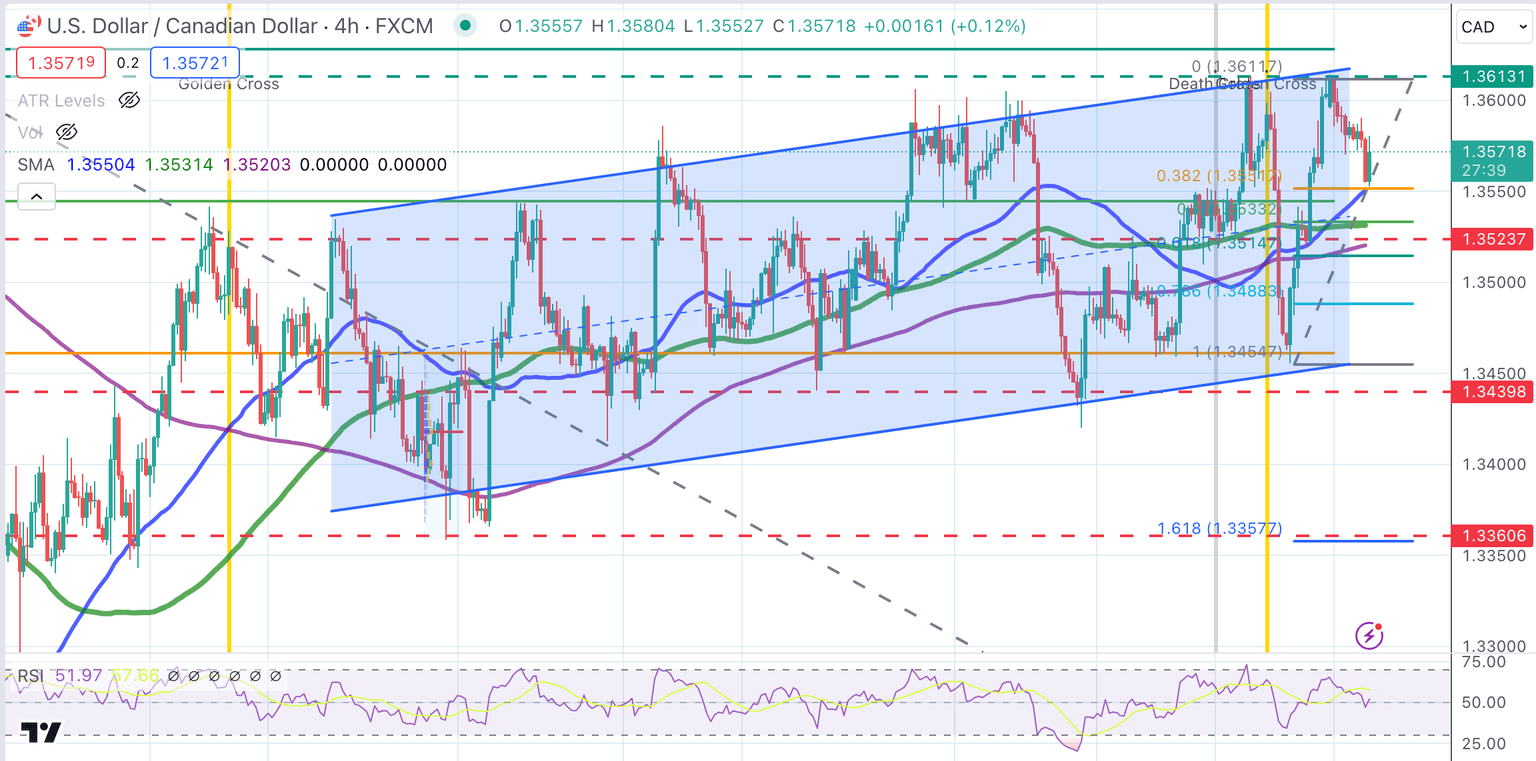Canadian Dollar clings to daily gains near 1.3580 vs. the US Dollar

- Canadian Dollar keeps ticking higher on Tuesday with investors confident that the Fed will start easing in June.
- The mixed US macroeconomic data seen on Tuesday has failed to provide a significant boost to the US Dollar.
- The broader USD/CAD trend remains positive while above the 1.3460 support area.
The Canadian Dollar (CAD) is ticking up for the second consecutive day on Tuesday. A mild appetite for risk is dominating the market in thin pre-Easter trading. The echoes of the dovish monetary policy statement by the Federal Reserve last week are keeping US Dollar bulls in check with all eyes on Friday’s US Personal Consumption Expenditures (PCE) Prices Index data.
US macroeconomic data has shown mixed figures. On the positive side, US Durable Goods Orders increased beyond expectations in February, although the unexpected contraction of the Conference Board’s Consumer Confidence Index has offset investors’ optimism.
On Monday, Fed speakers revealed the whole range of sensibilities among the bank’s policymakers. Chicago Fed President Goldsbee signaled three rate cuts, with a more hawkish Raphael Bostic hinting toward only one cut in 2024, and Fed Governor Lisa Cook defending a cautious approach.
Daily digest market movers: The CAD nudges higher with the US Dollar treading water
- The Canadian Dollar keeps trading higher on Tuesday, while the US Dollar loses ground.US Durable Goods orders increased at a 1.4% pace, beating expectations of a 1% increment.
- Non-defense capital goods orders, a gauge for future business spending, increased 0.7% after a 0.4% decline in January.
- The CB Consumer Confidence Index has dropped to 104.7 from 106.7 in February, against market expectations of an improvement to 107.00.
- Futures markets keep betting on a nearly 65% chance that the Federal Reserve will start cutting rates in June, which is keeping the USD on its back foot.
- The highlight of the week will be the US PCE Prices Index, the Fed’s inflation gauge of choice, which is expected to have accelerated at a 2.5% yearly pace in February, from 2.4% in the previous month.
- The Core PCE Prices Index is expected to have risen at a 2.8% yearly pace and 0.4% on the monthly rate in February, from 2.8% and 0.3%, respectively, in January.
Canadian Dollar price this week
The table below shows the percentage change of Canadian Dollar (CAD) against listed major currencies this week. Canadian Dollar was the strongest against the Swiss Franc.
| USD | EUR | GBP | CAD | AUD | JPY | NZD | CHF | |
| USD | -0.23% | -0.24% | -0.20% | -0.28% | 0.17% | -0.24% | 0.65% | |
| EUR | 0.24% | -0.01% | 0.04% | -0.02% | 0.40% | 0.06% | 0.89% | |
| GBP | 0.25% | 0.02% | 0.05% | -0.01% | 0.42% | 0.06% | 0.90% | |
| CAD | 0.19% | -0.04% | -0.04% | -0.06% | 0.36% | 0.01% | 0.85% | |
| AUD | 0.28% | 0.03% | 0.04% | 0.07% | 0.42% | 0.03% | 0.92% | |
| JPY | -0.17% | -0.39% | -0.30% | -0.35% | -0.42% | -0.37% | 0.51% | |
| NZD | 0.19% | 0.00% | 0.01% | 0.04% | -0.03% | 0.39% | 0.84% | |
| CHF | -0.65% | -0.90% | -0.90% | -0.86% | -0.92% | -0.49% | -0.86% |
The heat map shows percentage changes of major currencies against each other. The base currency is picked from the left column, while the quote currency is picked from the top row. For example, if you pick the Euro from the left column and move along the horizontal line to the Japanese Yen, the percentage change displayed in the box will represent EUR (base)/JPY (quote).
Technical analysis: US Dollar maintains its bullish trend intact
From a technical perspective, the USD/CAD’s broader bias remains positive, with the current Canadian Dollar recovery seen as a corrective reaction.
The pair remains trading within a rising channel after a rejection from the trendline resistance at 1.3615, which so far remains contained above the 38.2% Fibonacci retracement of the previous up leg at 1.3575.
USD/CAD 4-Hour Chart

The US Dollar has scope for further decline with investors awaiting Friday’s inflation data. Support levels at 1.3555 and the 1.3440-1.3460 area are likely to challenge bears. On the upside, resistance remains at 1.3610 and the 1.3700 level.
Canadian Dollar FAQs
The key factors driving the Canadian Dollar (CAD) are the level of interest rates set by the Bank of Canada (BoC), the price of Oil, Canada’s largest export, the health of its economy, inflation and the Trade Balance, which is the difference between the value of Canada’s exports versus its imports. Other factors include market sentiment – whether investors are taking on more risky assets (risk-on) or seeking safe-havens (risk-off) – with risk-on being CAD-positive. As its largest trading partner, the health of the US economy is also a key factor influencing the Canadian Dollar.
The Bank of Canada (BoC) has a significant influence on the Canadian Dollar by setting the level of interest rates that banks can lend to one another. This influences the level of interest rates for everyone. The main goal of the BoC is to maintain inflation at 1-3% by adjusting interest rates up or down. Relatively higher interest rates tend to be positive for the CAD. The Bank of Canada can also use quantitative easing and tightening to influence credit conditions, with the former CAD-negative and the latter CAD-positive.
The price of Oil is a key factor impacting the value of the Canadian Dollar. Petroleum is Canada’s biggest export, so Oil price tends to have an immediate impact on the CAD value. Generally, if Oil price rises CAD also goes up, as aggregate demand for the currency increases. The opposite is the case if the price of Oil falls. Higher Oil prices also tend to result in a greater likelihood of a positive Trade Balance, which is also supportive of the CAD.
While inflation had always traditionally been thought of as a negative factor for a currency since it lowers the value of money, the opposite has actually been the case in modern times with the relaxation of cross-border capital controls. Higher inflation tends to lead central banks to put up interest rates which attracts more capital inflows from global investors seeking a lucrative place to keep their money. This increases demand for the local currency, which in Canada’s case is the Canadian Dollar.
Macroeconomic data releases gauge the health of the economy and can have an impact on the Canadian Dollar. Indicators such as GDP, Manufacturing and Services PMIs, employment, and consumer sentiment surveys can all influence the direction of the CAD. A strong economy is good for the Canadian Dollar. Not only does it attract more foreign investment but it may encourage the Bank of Canada to put up interest rates, leading to a stronger currency. If economic data is weak, however, the CAD is likely to fall.
Author

Guillermo Alcala
FXStreet
Graduated in Communication Sciences at the Universidad del Pais Vasco and Universiteit van Amsterdam, Guillermo has been working as financial news editor and copywriter in diverse Forex-related firms, like FXStreet and Kantox.

















